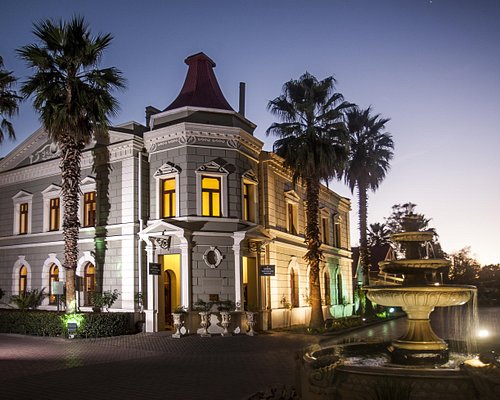What Does Johannesburg North Attractions Do?
What Does Johannesburg North Attractions Do?
Blog Article
How Johannesburg North Attractions can Save You Time, Stress, and Money.
Table of ContentsSome Ideas on Johannesburg North Attractions You Should Know3 Easy Facts About Johannesburg North Attractions ShownThe Basic Principles Of Johannesburg North Attractions Little Known Questions About Johannesburg North Attractions.The 10-Second Trick For Johannesburg North AttractionsThe Only Guide to Johannesburg North Attractions
The city grew on the edge of the Witwatersrand Main Coral reef, a subterranean stratum of gold-bearing quartz-silica empire that arcs for hundreds of miles below the Highveld - Johannesburg North attractions. Many of the gold mines in the city discontinued procedure in the 1970s, yet in its day the Witwatersrand gold market accounted for more than 40 percent of the globe's yearly gold production.Johannesburg has a pleasant climate. The city appreciates concerning eight hours of sunshine per day in both winter months and summer season.
What rainfall the city receives falls virtually exclusively in the summer season, typically in magnificent late-afternoon electric tornados. Air contamination postures a substantial problem, especially in the winter season, when thermal inversions hamper the westward flow of air from the Indian Ocean. Pollution is most serious in the largely resolved Black areas on the city's periphery, where lots of residents still rely upon coal for fuel.

Some Known Details About Johannesburg North Attractions
The equilibrium of the city is inhabited by whites. Holiday accommodation differs in character and top quality. Soweto is notorious for its endless rows of municipally constructed, two-room matchbox homes, yet it also has a few flourishing enclaves as well as teeming squatter camps, where 10s of thousands live without water, electrical power, or hygiene facilities.
Physical growth, although rather limited by transportation, proceeded promptly as immigration to South Africa, and Johannesburg particularly, enhanced substantially. This issue was resolved in the 1930s when the car was introduced in mass manufacturing to South Africa. Autos were, generally, constrained to the rich, and allowed them to relocate to the north of the city and commute into the centre.
Most bad residential areas were blended, with bad blacks and whites living together, although the wealthy residential areas were generally scheduled for whites. This transformed with the political election of the National Event in the 1948 political elections, who began to formalise the system understood as racism. Apartheid formally assigned which residential areas each race might stay in under the Group Locations Act.
The previous system of eleven numbered regions was reorganised in 2006. Marshalltown, as seen from the top of the Carlton Centre. The M1 and M2 run behind the buildings, and the southern residential areas expand past the highway limit. The internal city of Johannesburg is located within the city's Area F. The estimated population of the area is 200,000, [] but the number of individuals living in the internal city on read here a casual basis is unidentified, as lots of are illegal immigrants. A lot of higher-income citizens and white individuals have transferred to the north suburbs and have been replaced by lower-income black individuals. The joblessness, education, and age profiles of the location are all unidentified, because of the trouble of obtaining reputable information concerning the location.
The Ultimate Guide To Johannesburg North Attractions
Yeoville and Bellevue have a mix of house structures and single property devices on tiny great deals. The region lies on a hilly divide that ranges from eastern next page to west. The most conspicuous geographical function is Observatory Ridge, which is called for the large observatory located on it. The leisure areas are no more utilized, because of security issues.

10 Easy Facts About Johannesburg North Attractions Described
The eastern residential areas are some of the oldest locations of Johannesburg, there are big areas of Jewish and various other European backgrounds, the bulk of the populace is English speaking. There are 3 golf courses as well as a number of protected ridges with viewsites.
The location is mostly made up of old "matchbox" residences, or four-room houses constructed by the government, that were constructed to give affordable lodging for black employees during apartheid. Soweto is an abbreviation, meaning "South Western Townships". Street after road in this field is lined with matchboxes; nevertheless, there are a few smaller sized locations where thriving Sowetans have actually constructed homes that are much more comparable in stature with those in more wealthy suburbs.
Hostels are an additional popular physical feature of Soweto. Initially built to house male migrant workers, many have actually been improved as residences for couples and households. The N1 Western Bypass skirts the eastern boundary of Soweto. The residential area was not historically enabled to produce employment centres within the area, so mostly all of its homeowners are travelers to various other components of the city.
Top Guidelines Of Johannesburg North Attractions
The domestic areas in the northern suburbs are generally official, with no significant locations of informal housing, or real estate that lacks a permanent structure. This is a well established location, there is a trend of land use adjustment from residential to commercial, particularly along major arterial roads and around recognized nodes.
The location is well linked to roadway networks, specifically along the north-south axis developed by the M1 and N1. Roads to the east and west are much less well created, as there are no highways taking a trip because instructions. In the direction of the north boundary of the city, the thickness of development decreases, leaving large areas of undeveloped land around Midrand.
The Ultimate Guide To Johannesburg North Attractions
The this content first residential area to the north of the central city is Parktown, which lies on a hillside ignoring the central city and Hillbrow. It has many wealthy citizens and Edwardian-design manors, in addition to the Education and Clinical campuses of the College of the Witwatersrand. The big concrete Charlotte Maxeke Johannesburg Academic Healthcare Facility dominates the skyline of Parktown.
Report this page